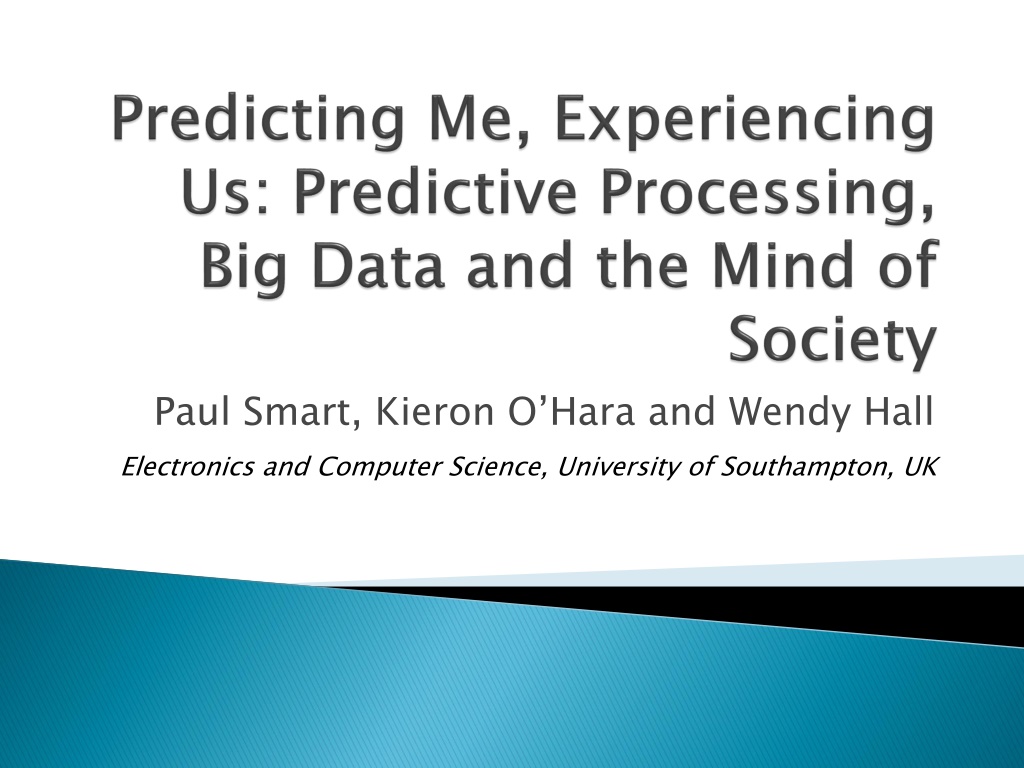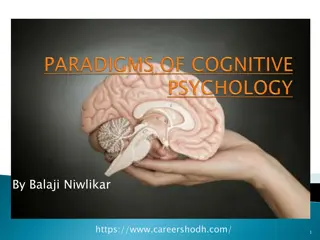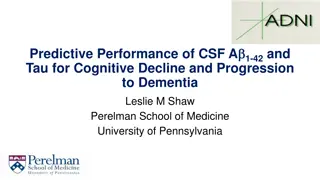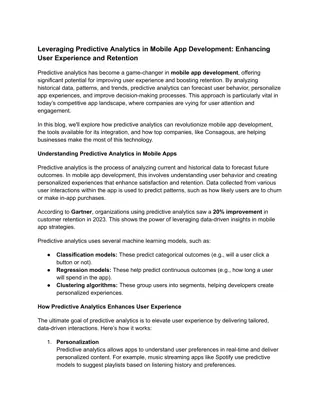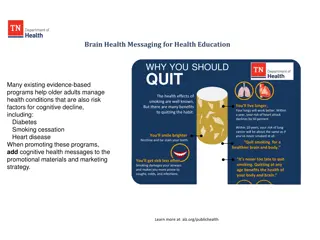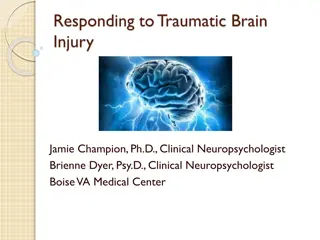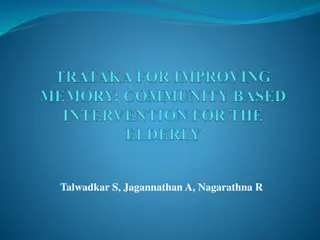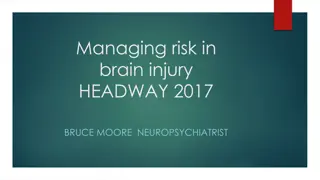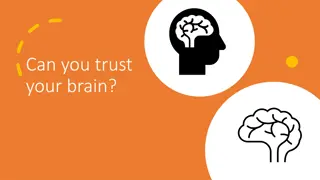Understanding the Brain's Predictive Processing and Cognitive Architecture
Exploring the fascinating realm of brain function and cognition, this content delves into topics like deep learning systems, big data implications, the predictive nature of the brain, cortical hierarchy, active inference, generative models, and cognitive architectures explaining various mental conditions such as schizophrenia, autism, depression, and more. It emphasizes the brain's role as a prediction engine and its constant attempt to anticipate and interpret internal and external stimuli, shedding light on the complex mechanisms underlying human cognition.
Download Presentation

Please find below an Image/Link to download the presentation.
The content on the website is provided AS IS for your information and personal use only. It may not be sold, licensed, or shared on other websites without obtaining consent from the author. Download presentation by click this link. If you encounter any issues during the download, it is possible that the publisher has removed the file from their server.
E N D
Presentation Transcript
Paul Smart, Kieron OHara and Wendy Hall Electronics and Computer Science, University of Southampton, UK
The brain as a prediction engine. Deep learning systems. Big data: personal data social data Minds online: corporeal parasitism mind of society Data Science Neuroscience Web Science Philosophy of Mind Cognitive Science
Cortical Hierarchy Inferotemporal Features: Zebra Information Features: Stripey Pattern V1 Features: Lines/Bars
Cortical Hierarchy Inferotemporal Hypotheses: Zebra Prediction Error Predictions Hypotheses: Stripey Pattern V1 Hypotheses: Lines/Bars
Multiple temporal and spatial scales. Hierarchical Organization Change the model or change the world. Active Inference Generative Models Predictive Minds Generate predictions. Prediction Error Precision Weighting Learning and model revision. Balance between top- down vs. bottom-up.
One cognitive architecture to explain them all! Schizophrenia (Adams et al., 2013) Schizophrenia Perception (Rao & Ballad, 1999) Perception Psychotomimesis (Corlett et al., 2009) Psychotomimesis Autism Autism (Pellicano & Burr, 2012) Depression (Chekroud, 2015) Depression Predictive Processing Memory (Klein, 2013) Memory Attention (Clark, 2016) Attention Conscious Presence (Seth et al., 2011) Conscious Presence Emotion (Seth, 2013) Emotion Motor Control (Friston et al, 2010) Motor Control Language Language (Pickering & Garrod, 2013)
Generative Model I am the cause of my own sensory data. Brain is attempting to predict its own activity. Perceptual Data Causal Mechanisms
Me! I am my brain s best guess! Proprioceptive Interoceptive Exteroceptive My Body My World
Deep learning architectures (e.g., Deep Belief Networks). 2000 hidden units 500 hidden units 10 label units 500 hidden units Hinton, G. E. (2007) Learning Multiple Layers of Representation Cognitive Sciences, 11(10), 428-434. Learning Multiple Image 28 x 28 pixels Layers of Representation. Trends In
Deep learning = tool for big data analytics and important focus area for data science. Recommender Systems Recommender Systems Semantic Indexing Semantic Indexing Bioinformatics Bioinformatics Robotics Robotics Speech Recognition Speech Recognition Game Playing Game Playing Natural Language Processing Natural Language Processing Computer Vision Computer Vision
e.g., novelty metrics Neotenic Minds Predictive Minds Frugal Minds Our Minds Systems (HDLS) Homomimetic Deep Learning Scaffolded Minds Hybrid Minds Extended Minds Plastic Minds e.g., sleep and synaptic homeostasis Embodied Minds
900 800 700 600 Terabytes 500 400 300 200 100 0
Wearable Technology Social Machines Personal Data Social Data HDLS Generative Model (Mental Mechanisms) Generative Model (Social Mechanisms)
Proprioceptive Interoceptive Exteroceptive Personal Data My Body My World
Proprioceptive Interoceptive Exteroceptive http://www.stockazoo.com/uploads/3/5/4/5/3545172/laptop.jpg
Instrumenting society: social machines social mining social fMRI socioscopes web observatories Minding society: network models multimodal, multiplex, dynamic link prediction network motifs
Personal Data personal reality mining corporeal parasitism mind uploading (recreation) digital immortality (resurrection) Social Data social reality mining hypothesis testing mind of society social control
Deep Learning: homomimetic deep learning systems Big Data: personal data wearable tech social data social machines Corporeal Parasitism: generative model of behavioural and physiological data. a way of preserving some sort of psychological trace of me in the online realm? Mind of Society: attempt to predict (and perhaps influence) social reality. subjective experiences? computational social science analytical sociology
